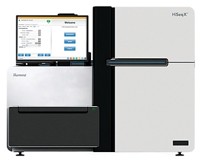Advertisement
Grab your lab coat. Let's get started
Welcome!
Welcome!
Create an account below to get 6 C&EN articles per month, receive newsletters and more - all free.
It seems this is your first time logging in online. Please enter the following information to continue.
As an ACS member you automatically get access to this site. All we need is few more details to create your reading experience.
Not you? Sign in with a different account.
Not you? Sign in with a different account.
ERROR 1
ERROR 1
ERROR 2
ERROR 2
ERROR 2
ERROR 2
ERROR 2
Password and Confirm password must match.
If you have an ACS member number, please enter it here so we can link this account to your membership. (optional)
ERROR 2
ACS values your privacy. By submitting your information, you are gaining access to C&EN and subscribing to our weekly newsletter. We use the information you provide to make your reading experience better, and we will never sell your data to third party members.
Environment
Inside Instrumentation
Technology and Business News for the Laboratory World
by Celia H. Arnaud and Ann M. Thayer
January 9, 2006
| A version of this story appeared in
Volume 84, Issue 2
Bioscience-oriented AFM debuts
Veeco Instruments has launched BioScope II, an atomic force microscope aimed at advanced bioscience research. Its "open" physical design allows access to samples without interfering with the optics. The range of the microscope is more than 15 μm in the z direction and more than 150 μm in the x-y plane, enabling the microscope to image large structures such as cells and correlate AFM data with optical and fluorescence images. The instrument is suitable for a number of biological applications, including spatial identification of proteins and cellular structures, investigation of cellular response to mechanical stimulation, and in situ pharmacological studies with live cells.
Firms conduct business deals
Applied Biosystems Inc. will spend $273 million to acquire the research products division of Ambion, a maker of RNA-based reagents. The 17-year-old division employs about 300 people at R&D, manufacturing, and other operations in Austin, Texas. It will become part of ABI's molecular biology division and help expand the company's consumable product offerings. To streamline its business, PerkinElmer has finished the sale of its aerospace unit to Eaton Corp. The divestiture will help PerkinElmer focus on its higher growth health sciences and photonics businesses, which target genetic screening, medical imaging, molecular medicine, and related services. The company also has sold its fluid-testing operations and is looking to sell its semiconductor business.
Genome analysis platform unveiled
Solexa has introduced its Genome Analysis System, a platform for DNA sequencing, gene expression profiling, and microRNA analysis. The system includes the Solexa 1G Genetic Analyzer, the Solexa Cluster Station, and associated reagents and software. It is designed to sequence more than 1 billion bases per run. Solexa plans to use the system to sequence a human genome this year and make the data publicly available for comparison with other human genome sequences. "We expect this endeavor to display the suitability of our platform for rapid and cost-effective human genome sequencing and to pave the way for new applications in medical sequencing, such as the Cancer Genome Project," says David Bentley, chief scientist at Solexa.
New LIMS sets sail
Thermo Electron has launched the Darwin LIMS for pharmaceutical manufacturing R&D and quality control. This new laboratory information management system includes functions targeted specifically for the pharmaceutical industry, such as dissolution, content uniformity, stability management, product management, batch management, and system interfacing. Thermo expects that incorporating such a wide range of functions as standard features will reduce the need for on-site customization.
Companies establish programs with academia
Three instrumentation providers have recently set up collaborations with prominent research institutions to develop and use new technologies for genomic, cell-based, and materials studies.
454 Life Sciences, a subsidiary of CuraGen, will work with the Broad Institute, a joint center of Massachusetts Institute of Technology, Harvard University and its hospitals, and Whitehead Institute for Biomedical Research. Under the agreement, Broad researchers will use 454 Life Sciences' Genome Sequencer 20 system to conduct large-scale genomic studies in diseases such as cancer, diabetes, and heart disease. The company and institute will also work together to develop additional, novel uses of the technology.
Separately, Fujitsu's BioSciences Group has set up a project with Whitehead Institute to evaluate the company's Cellinjector system for high-throughput cell-based research. Fujitsu will provide the automated microinjection system that Whitehead researchers will use in projects such as peptide expression and trafficking in stem cells, assessment of gene expression controls, and the study of cell-signaling cascades.
Meanwhile, Japan's JEOL is partnering with the MIT Institute for Soldier Nanotechnologies. As a new member of ISN's Industrial Consortium, JEOL's U.S. subsidiary will provide applications support and service for its instruments being used to image materials and devices at the nanoscale. ISN is using a JEOL scanning electron microscope and a focused ion beam system to prepare and manipulate samples for imaging by electron microscopy.






Join the conversation
Contact the reporter
Submit a Letter to the Editor for publication
Engage with us on Twitter